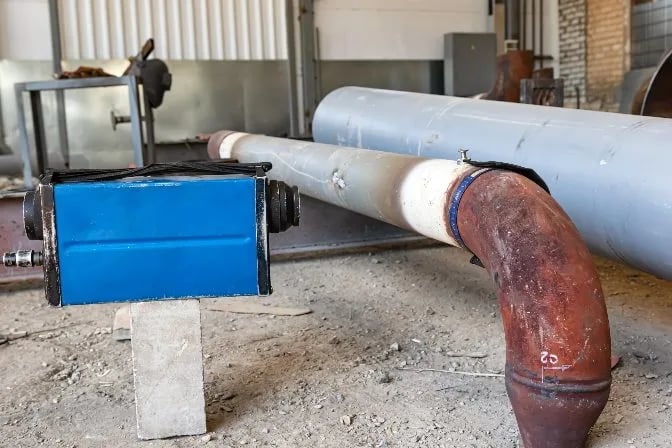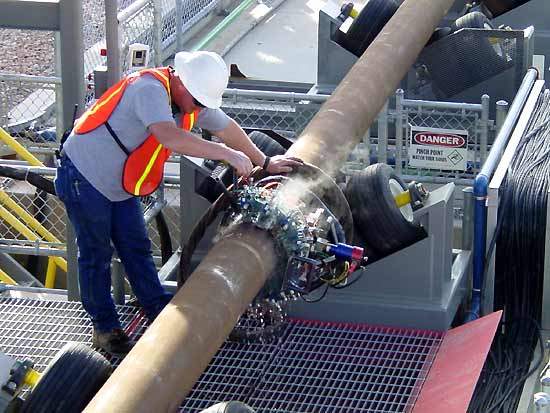Streamline Your Project: Reputable Pipeline Welding Inspection Professionals at Your Solution
Streamline Your Project: Reputable Pipeline Welding Inspection Professionals at Your Solution
Blog Article
Comprehensive Review of Pipe Welding Evaluation Treatments
Pipe welding examination procedures play an important role in assuring that bonded connections fulfill rigid market standards and requirements. From careful pre-welding assessments to extensive post-weld assessments, a distinct evaluation procedure is necessary for preserving the architectural sturdiness of pipes.
Pre-welding Evaluation Preparations
Prior to beginning the welding process, complete pre-welding examination prep work are important to guarantee the integrity and top quality of the weld joint. These preparations involve a thorough assessment of the materials to be welded, the welding equipment, and the job atmosphere. By conducting thorough pre-welding examination prep work, possible concerns can be recognized and solved early on, leading to top notch and trustworthy weld joints.
Welding Procedure Credentials
Complete pre-welding assessment preparations lay the structure for the critical process of Welding Treatment Credentials, ensuring the integrity and quality of the weld joint. Welding Procedure Certification (WPQ) is a vital step in the welding process that involves screening and accrediting welding procedures to ensure they satisfy specific requirements and requirements. The WPQ procedure usually includes welding procedure requirements growth, welding procedure credentials testing, and paperwork of the outcomes.
Throughout welding procedure spec growth, important information such as the welding procedure, welding materials, joint style, and welding parameters are defined to develop a detailed procedure. Consequently, welding procedure qualification screening is performed to verify the recommended treatment's honesty. This screening commonly includes welding test vouchers that undergo various mechanical and non-destructive tests to evaluate the weld's high quality and adherence to the defined requirements.
In-process Weld Examination
Throughout the welding process, in-process weld evaluation plays a crucial role in making sure the top quality and integrity of the weld joint - Pipeline Welding Inspection. This sort of inspection includes checking the welding specifications, examining the weld grain formation, and detecting any type of possible issues or interruptions as they happen. By carrying out in-process weld evaluations, welding operators can promptly address any issues that may arise, thus making sure and stopping additional defects that the last weld satisfies the needed specifications
Common techniques made use of for in-process weld inspection include aesthetic inspection, fluid penetrant screening, magnetic particle screening, ultrasonic testing, and radiographic screening. Visual examination is often the very first step at the same time, permitting examiners to visually analyze the weld for surface irregularities such as fractures, porosity, or incomplete blend. A lot more sophisticated techniques like ultrasonic testing and radiographic screening offer comprehensive understandings into the inner structure of the weld, ensuring that there are no concealed defects that might compromise the weld joint's stamina and my company integrity. Generally, in-process weld inspection is essential for preserving the quality and integrity of welded pipes.
Non-destructive Testing (NDT)
Non-destructive Screening (NDT) is a vital method utilized in pipe welding examination to evaluate the honesty of weld joints without triggering damages to the welded framework. By making use of various NDT methods, assessors can evaluate the quality of welds and determine any problems or stoppages that may jeopardize the structural stability of the pipeline. Typical NDT methods utilized in pipeline welding assessment consist of Radiographic Screening (RT), Ultrasonic my website Screening (UT), Magnetic Bit Examining (MPT), Fluid Penetrant Testing (LPT), and Visual Screening (VT)
RT entails the usage of X-rays or gamma rays to generate pictures of the interior structure of the weld, enabling assessors to identify defects such as porosity, cracks, or insufficient combination. Additionally, VT entails visual evaluation of welds to identify any type of visible blemishes.
Post-weld Assessment and Documentation

Documents of post-weld evaluation searchings for is necessary for maintaining quality control records and guaranteeing conformity with industry criteria and policies. Thorough reports need to include information regarding the inspection approaches used, the place and nature of any issues found, and any kind of rehabilitative actions taken - Pipeline Welding Inspection. Correct paperwork not only works as a record of the weld's high quality but likewise aids in future maintenance and inspection procedures
Conclusion

In conclusion, pipe welding evaluation procedures play a critical function in making certain the high quality and honesty of welds. From pre-welding evaluations to post-weld documents, each step is vital in keeping the safety and effectiveness of pipes. By following recognized treatments and performing extensive evaluations, potential flaws can be recognized and addressed before they cause pricey repairs or failures. In general, adherence to appropriate assessment methods is vital to the success of pipeline welding projects.
From precise pre-welding assessments to comprehensive post-weld evaluations, a distinct inspection procedure is important for keeping the architectural soundness of pipelines. By carrying out in-process weld examinations, welding operators can quickly attend to any kind of problems that may emerge, consequently making certain and preventing additional problems that the last weld satisfies the required specifications.
Common techniques used for in-process weld evaluation include aesthetic inspection, fluid penetrant screening, magnetic bit screening, ultrasonic testing, and radiographic testing.Non-destructive Screening (NDT) is an important approach utilized in pipeline welding examination to pop over here examine the integrity of weld joints without creating damage to the bonded structure. Post-weld examination includes various approaches to evaluate the welds for issues, including aesthetic examination, dye penetrant screening, magnetic particle testing, ultrasonic testing, and radiographic screening.
Report this page